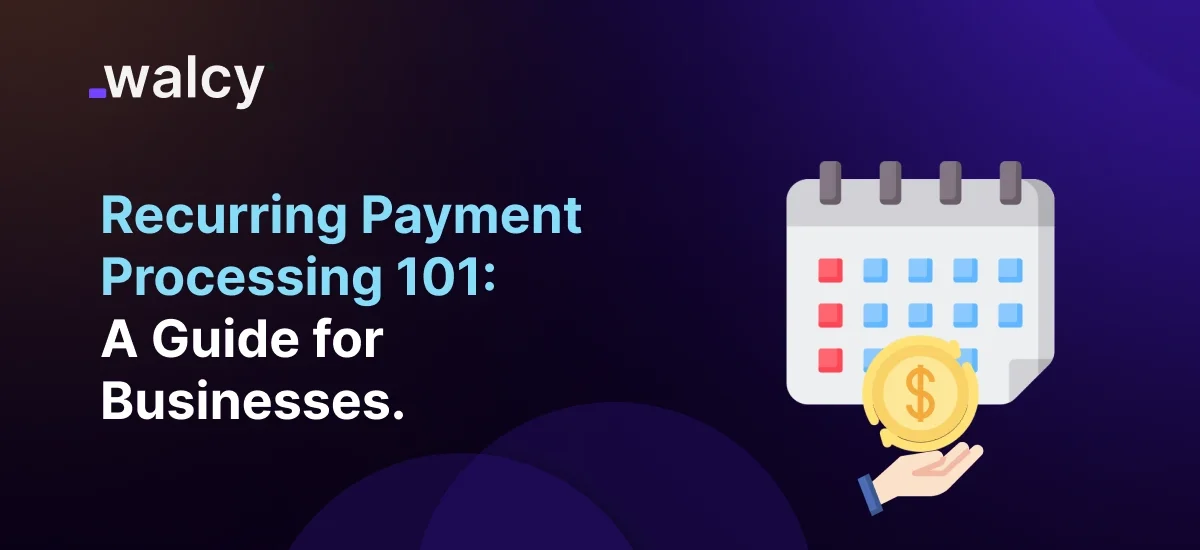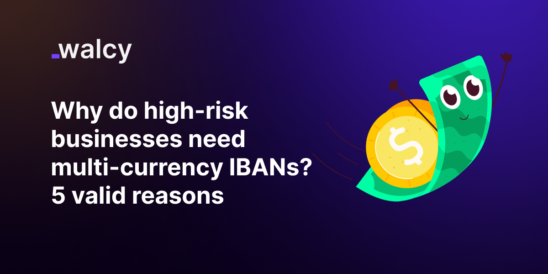Today’s subscription-based economy has made recurring payment processing indispensable to companies in various industries.
Whether it’s a SaaS platform, a membership-based service, or an e-commerce store offering subscription products, it’s really important to understand the inner details of recurring payment processing to maximize revenue, improve customer retention, and smoothen business operations.
This complete guide covers everything from identifying the best recurring payment system to understanding the difference between recurring payments and direct debits.
It also explores the benefits of implementing one for your business.
What is Recurring Payment Processing?
Recurring payment processing is a system where payments are collected regularly directly from clients.
Settings can be weekly, monthly, yearly, or any billing cycle, depending on the nature of the services or products that one deals in.
This kind of payment system ensures that your customers will be charged continuously without having to process the payments every time, saving so much headache for both the merchant and the consumer.
Other examples of use include subscription-based models, such as Netflix or Spotify, gym membership, and SaaS. Utilities, donations, insurance premiums, and the like could also be examples of its use.
Read about: CIPS: Cross-Border Interbank Payment System. China’s Alternative to SWIFT
Recurring Payments vs Direct Debit: What is the Difference?
On paper, recurring payment and direct debit appear to mean the same thing, though they do differ in a couple of ways. Knowing such differences allows the business to choose rightly how they want to get the money.
Recurring Payments
These will usually be done via automated deduction on a set schedule, normally through credit cards, debit cards, or digital wallets. This consists of a recurring payment created by a business for the customer to accept, or the terms, whereby a processor automatically takes payments via the customer’s card at regular intervals.
Pros for recurring payments:
- Highly Acceptable:
Almost every customer in this world uses credit cards and digital wallets, and most of the customers are pretty comfortable with these modes of payment.
- Flexible:
A recurring billing schedule on a weekly, monthly, quarterly, or annual basis is available for the businesses.
- Customer Convenience:
The payments get automatically processed, saving the customer from the headache of having a missed payment. This alone reduces late fees and will improve customer retention.
Direct Debit
Direct debit is a kind of payment in which a person or business gives permission for a firm to regularly take money out of their bank account. Because it offers a practical and automated method of managing transactions, it is frequently used for routine payments like utility bills, subscriptions, or loan repayments.
Read about: What Is Debit Card Processing? How it works?
Pros of direct debit:
- Lower transaction fees:
Most often, direct debit transactions could be less expensive to process compared to credit card payments; therefore, they can prove economical for companies.
- Higher approval rates:
Generally speaking, transactions via direct debit are more likely to go through since they do not have all of the credit limits and availability of balance that surrounds credit card payments.
Key Differences:
Payment source:
Generally, the recurring payment transaction mode is a credit card and e-wallet. Here the draw of money is direct to the customer’s bank account when direct debit
Transaction Fee:
Generally, charges related to direct debit are at concessional rates compared to any credit card processing fee.
Geographical preference:
Recurring payment rules in North America, the usage of direct debit is extremely high in the UK, Europe, and elsewhere.
Customer experience:
In credit card payments, the customer gets more flexibility at the time of the transaction, whereas, in direct debit, the customer needs to have funds in their account when the transaction occurs.
Read about: International Payment Fees | The Essential guide.
Best Recurring Payment System to Choose for Your Business
The best recurring payment system for your business is related to your industry, customer preference, and budget. The following are some of the trending recurring payment solutions that one can consider:
-
Stripe
One of the most well-known payment processors, Stripe provides businesses with a seamless and integrated recurring payment solution.
It is integrated with tons of e-commerce platforms such as Shopify and WooCommerce.
Thus, it is just fantastic for online retailers. With Stripe, you can create customized billing cycles. Great security features protect not only businesses from fraud but also their clients.
Read about: Cross-Border Payment Solutions: Past vs. Present vs. Future
Key Features:
- Subscription billing – customizable
- Credit Cards, Digital Wallets, and ACH-supported International
Read about: Know Everything About International ACH Transfer in 2024
-
PayPal Recurring Payments
PayPal is probably the most recognizable of all the online payment systems, and their recurring payment solution delivers flexibility.
It’s an easy way to provide recurring billing from within a site, easy to use, and seamlessly integrates with most websites. Moreover, a lot of customers trust it, and that’s where the conversion happens.
Key Features:
- Smooth Integration of website and applications
- Global customer support
- Security: trusted worldwide payment gateway
- Braintree
Braintree, by PayPal, provides recurring payment solutions that integrate credit cards, debit cards, and digital wallets under one interface. Additionally, it allows customizing subscription cycles, invoice automation, or failure retries, with more robust subscription management features.
Key Features:
- Full-cycle Subscription Management
- Easy Integration with Numerous Platforms
- Robust Fraud Protection
Read about: International Payment Fraud: Ultimate Guide For Businesses.
- Square
Other equally great options in town for small businesses while using recurring payment systems include Square.
Square makes its interface user-friendly because invoicing is done regularly, therefore offering many flexible options for making payments.
This fits companies that sell online or operate in person, serving them with seamless integrations in in-person point-of-sale transactions and online subscriptions.
Key Features:
- Easy setup
- Full-service payment processing solution
- Multi-billing schedules
- Recurly
Recurly comes with rich experience in running recurring bills for subscription-based companies.
It supports various payment methods and multiple currencies, hence the best option for those companies that deal with customers around the world.
Recurly also provides multi-feature tools for subscription analytics, enabling your business to track the actions of your customers for optimized revenue.
Read about: Best Multicurrency Account: What Is It And How It Works?
Key Features:
- Sophisticated subscription analytics
- Agile payment methods
- Integration with main e-commerce platforms
One-Time Payments: What You Should Know
While recurring payment systems are on the front seat of businesses operating on subscription models, any number of businesses have to deal with non-recurring payments eventually.
These are mostly one-time charges that might be a customer purchasing once or paying for something only one time.
These fall out of the recurring charge system and are normally expected to be inputted manually every time by the paying customer.
Of course, one would not want to disregard the non-recurring payments either, which is an integral concern for any business dealing with both recurring subscriptions and one-time services or products.
Being able to have a frictionless payment processing solution for recurring and non-recurring payments alike is critical for you to optimize the entire customer payment experience.
Why Implement a Recurring Payment Program?
Adoption of such a recurring payment program will have numerous advantages:
-
Predictability of Revenue Streams
Recurring payment processing is predictable for several reasons.
To explain in detail, it simply means that a business can estimate cash flow more surely since customers are locked into periodic billing cycles.
Such stability allows the company to plan growth, make better investments, and manage operational costs more adequately.
-
Improved Customer Retention
Recurring payments are also supportive of long-term relationships with customers.
Making it automated means the customer is not worried about a monthly or regular manual payment, reducing churn.
Furthermore, it provides subscription options for the customers to select based on their preference: monthly, quarterly, yearly, or whatever suits them, retaining subscription customers.
-
Less Administrative Headache
The automation applied to the payment cycle frees up much time that is usually spent on follow-ups or invoicing.
In other words, the administrative overhead decreases and now can be utilized for meaningful tasks like marketing, product development, or customer care.
-
Higher Average Customer Lifetime Value (CLTV)
Recurring payments enhance CLTV because they let your customer be on a continuous subscription to use your service. It ensures that a company generates more revenues due to one customer and receives a compounding effect created by subscriptions for a long time.
-
Scalability
As your business scales up, it is impractical to keep track of the payments made by a thousand or million customers. Recurring payment systems automatically scale, meaning that a growing volume of transactions becomes easier to manage without significant added complexity.
Conclusion
The modern world has integrated the recurring nature of payment into many modern business models.
Knowing the difference between recurring payments versus direct debits, choosing the best recurring payment system that fits your needs, and effectively implementing a recurring payment program-all of will assist you in smoothing your payment processes, improving customer retention, and ultimately enjoying predictable revenues.
Whether a subscription-based business or offering membership services, recurring payment processing is going to go a long way in simplifying operations and reducing administrative burdens, while even opening opportunities for long-term growth.
Select the choice of the payment system that best matches your business model and your customer’s preferred choices for the maximum benefit of this powerful means of paying.
Read about: All About Overseas Payments (2024); Comprehensive Guide
Do follow us on Facebook and LinkedIn, to stay connected with us.



